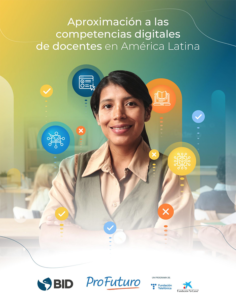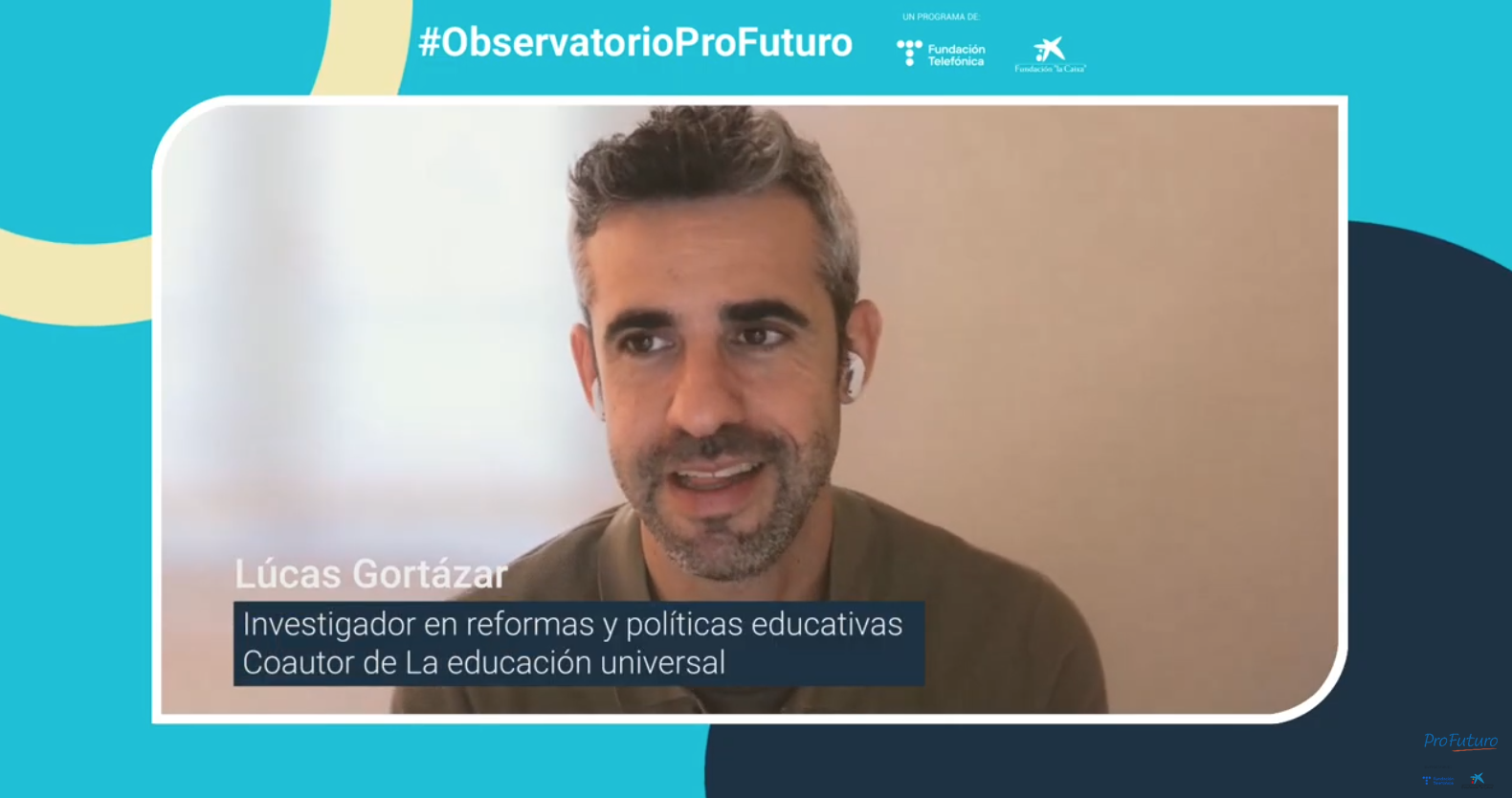The great paradox: digital transformation with analog teachers
In recent years, the digital transformation of education has become a mantra repeated ad nauseam in international forums, government plans, and institutional strategies. Speeches about innovation, the power of artificial intelligence, and the need to prepare students for an uncertain but digital future have multiplied. However, when we step down from official documents to the reality of the school, the scene is far less promising: our teachers, the true agents of change in classrooms, still lack the most basic digital competences.

The study Aproximación a las competencias digitales de docentes en América Latina (Approach to Teachers’ Digital Competences in Latin America), prepared by the Inter-American Development Bank and the ProFuturo Foundation, gives us an alarming snapshot. With data from more than 28,000 teachers from six Latin American countries, the report shows that while we constantly talk about technological innovation, most of those who should bring it into the classroom do not have the tools to do so.
The paradox is obvious. Teachers are expected to be mediators of digital culture, guides in a world saturated with information, advisors in the face of the risks and possibilities of emerging technologies. And yet, many of them are forced to improvise, to move through trial and error, without the support of systematic training that addresses their real needs. The digital teacher gap, far from closing, threatens to perpetuate educational inequality in a region where quality and equity remain unfinished business.
X-ray of teachers’ digital competences
The IDB and ProFuturo study is based on a broad conceptual framework that understands teachers’ digital competences as a set of skills distributed across three dimensions: pedagogical, digital citizenship, and professional development. To measure them, it uses an adaptation of the Edutec Guide, originally developed in 2016 by the Center for Innovation in Brazilian Education (CIEB) and later adapted and made available as an open-source tool by the ProFuturo Foundation.
The Digital Competence Self-Assessment Tool, based on the Edutec Guide, was designed as a self-assessment instrument: teachers answer a questionnaire that allows them to diagnose their own level of digital competence in different areas. The tool generates automatic reports that classify teachers into different achievement levels (exposure, familiarization, adaptation, integration, and transformation), with specific descriptors for each stage. These descriptors include, for example, everything from the simple ability to use a basic digital resource to the full integration of technologies in innovative pedagogical processes.
The results from a sample of more than 28,000 teachers in six Latin American countries reveal a worrying picture. Only 27% of teachers consider that they reach a basic level in the pedagogical use of technology: designing learning activities that integrate digital resources, assessing through platforms, or combining traditional methodologies with innovative tools. In other words, three out of four teachers acknowledge that they lack the necessary foundations to incorporate ICT into everyday classroom practice.
With regard to digital citizenship, barely 29% surpass the minimum threshold. This dimension—which encompasses the ability to teach students to use technology in an ethical, safe, and responsible way—stands out as a particularly serious deficit at a time when phenomena such as disinformation, cyberbullying, and problematic use of social networks are on the rise.
The third dimension, professional development, shows slightly more encouraging figures: 40% of teachers reach the basic level. However, what this figure indicates is that teachers are mainly turning to technology for their own training—accessing online courses, searching for materials, or participating in virtual communities—rather than to transform their students’ learning experience.
The contrast is crystal clear: teachers benefit from technology to grow individually, but they are not managing to translate that potential into the most decisive space, the classroom. Pedagogical innovation, which is the true catalyst for a more equitable and higher-quality education, continues to be the most lagging dimension. And in the meantime, discourses on educational digitalization continue to project an image of change that reality, on the ground in classrooms, still contradicts.
Factors behind the gap
The low levels of teachers’ digital competence in Latin America are not distributed evenly. The study identifies several factors that significantly influence the results, revealing the complexity of the problem and the need to address it from multiple angles.
Age, first of all, marks clear differences. Younger teachers tend to show greater self-confidence in using technology, as a result of generational familiarity with digital devices. However, this advantage does not always translate into a more sophisticated pedagogical use. The ability to handle social networks or apps does not in itself guarantee the capacity to integrate them into structured teaching practices with educational value. Teachers’ digital competence is much more than technical skill: it is, above all, pedagogical competence.
Gender is another significant factor. Men tend to rate themselves at higher competence levels than women, although various studies warn that this difference may reflect perception biases rather than real inequalities in skills. Women’s underestimation and men’s overestimation—phenomena widely documented in the literature on self-perception—suggest that the gender gap in teachers’ digital competences may be, at least in part, a confidence gap.
The level of academic training also matters. Teachers with postgraduate studies are more likely to reach a basic level in all dimensions compared with those who have only university or technical studies. This seems to indicate that exposure to more complex training processes—where the use of digital resources is more common—helps to develop greater ease in handling technology.
Even more decisive is specific training in ICT. Having participated in educational technology training courses increases by up to twenty percentage points the likelihood of surpassing the minimum threshold of digital competence. This finding confirms something that should be obvious but is often overlooked: competences do not arise spontaneously; they require systematic and continuous training policies.
Lastly, the subject area taught makes a clear difference. Teachers of STEM subjects (science, mathematics, technology) tend to show better results than those who teach humanities or early childhood education. This reflects both the nature of their disciplines—which are more closely linked to the use of digital tools—and the greater availability of specific resources for these areas.
Taken together, these factors confirm that the digital teacher gap is not merely an individual issue. It is a social and structural construct, the result of the interaction between age, gender, academic training, access to capacity building, and disciplinary field. Addressing it therefore requires a comprehensive approach that goes beyond distributing devices or installing connectivity, and instead invests in human capital and equity policies.
Toward truly transformative teacher training
As we have stated several times in this Observatory, the deficit in teachers’ digital competences will not be solved with more devices or simple connectivity programs. The experience of the last two decades clearly shows that the gap is not technological but pedagogical. That is why both the IDB and ProFuturo insist that the key lies in teacher training: training that is continuous, context-based, practical, and capable of transforming school culture.
Regarding this training, the study identifies several essential principles. First, capacity building must be continuous. Digital literacy cannot be reduced to one-off courses delivered once and forgotten after a few months. The speed of technological change demands ongoing support, with opportunities for updating and professional renewal that allow teachers to stay up to date.
Second, training must be context-based and practical. Standardized, decontextualized, and overly theoretical trainings are of little use. Teachers need opportunities to experiment in their own environment, with their students and their actual resources. It is in practice, in trial and error, where lasting competences are built.
A third principle is peer collaboration. International research has shown that teacher learning is more effective when it takes place in professional communities: groups of teachers who share experiences, observe one another, and build collective knowledge. Technology can enhance these networks, as long as there is a policy that promotes them.
The report also underscores the need to strengthen the digital citizenship dimension. Teaching teachers to operate tools is not enough. They must be trained to guide their students in the safe, critical, and responsible use of technology. In an environment saturated with information, riddled with fake news, hate speech, and privacy risks, this competence becomes as important as literacy in reading or writing.
Finally, the authors call for coherent, sustainable public policies. Teacher training cannot depend on isolated initiatives, often linked to international cooperation or short-term projects. A national framework is needed to coordinate efforts, ensure stable funding, and establish assessment and diagnostic systems that make it possible to accurately understand teachers’ needs.
In other regions, such as Uruguay with Plan Ceibal or Portugal with the Digital Competence Program for Teachers, important steps have been taken in this direction. Latin America already has valuable experiences, but what is missing is the leap to a national and regional scale. Only then will it be possible to turn the rhetoric of digital innovation into an everyday reality for millions of students.
Political will, sustained investment, and a shift in approach
The snapshot offered by the IDB and ProFuturo study is clear and forceful: teachers in Latin America still do not have the digital competences needed for educational transformation to be more than a slogan. While official discourse insists on technological innovation, improvisation and insufficient training prevail in classrooms. The digital teacher gap not only persists, it threatens to widen if determined and sustained measures are not taken.
Teachers’ lack of digital preparation directly affects the quality of learning, the equity of opportunities, and the capacity of education systems to respond to the challenges of a society in constant technological change. This is not a minor obstacle. Where teachers are not prepared, the digitalization of education is nothing more than a mirage. And, as always, the most disadvantaged students are the ones who suffer most.
Closing this gap requires political will, sustained investment, and a shift in approach: understanding that digital transformation is not achieved with infrastructure or apps, but with human capital. To this end, it is also essential (and the development and adaptation of the Self-Assessment Tool moves in that direction) that teachers can recognize their starting point and have access to relevant training opportunities. But an active disposition on the part of teachers to grow, improve, and strengthen their competences is also needed. The countries that have made progress in this direction have done so by placing teacher training at the center of their policies. Latin America cannot afford anything else: without teachers who are digitally competent, there will be no possible innovation or quality education for all. And losing that opportunity would mean condemning yet another generation to an education that is outdated, unequal, and disconnected from the realities of the 21st century.






